Tori Elite XL Light Katana Review
The Sword of Shimabukuro
By Paul 'Batman' O'Brien
B.A., N.C.E.H.S., Dip. Acu., Adv. Dip. OBB, Cert Clin. Med. Pn1, PN-SSR, PN-NCA, M.AFPA, M.ETCMA, M.C.Th.A.
The Tori Elite XL Light Katana Review is LONG, long overdue. I've mentioned this sword a being my favourite cutter in every review of every other sword I've had since it arrived. It is the benchmark by which I judge a blade for Tameshigiri....and it is, as I've said in previous reviews, "the BEST production blade out there is the Paul Chen Tori Elite Xl Light". Finally, I am going to detail why and then I am going to show you why....when I show perhaps the most satisfying cut I ever performed....
The Tori Elite XL Light Katana Review Introduction:
As I've advanced in my studies of Musō Jikiden Eishin Ryū it's become increasingly necessary for me to train with a Shinken, or a live blade, one capable of cutting. The reasons for this are many but the primary function is to focus the mind. It is far too easy to become complacent in the performance of Iai in using a Iaito. The dull blade can still cause minor irritation if you nick yourself on the thumb during an inattentive noto (re-sheathing of the blade) due to the pointed kissaki. But there's little real danger there. Little to compel you to treat it as seriously as you would a live blade - and as result despite even the best of will's a certain amount of relaxation creeps in to one's technique.
In Japan, most 3rd Dan's would start using a Shinken, with permission from their Sensei of course...and there is a dual purpose to this. Firstly it forces you to completely reassess your technique. I cannot emphasise enough how slowly all of your previously 'flashy', (read poorly done) movements become when you are using a 3 foot long razor blade.
I often see students of Iai today who have been training for a year or so....they are confident that of the sequence of movements they are expected to perform. They try to imbue a sense of realistic action into the movement. They are very earnest. And they are all, without exception too fast. When I look at these students I remember of my early teachers was also very fast - and chastised by his seniors in Japan, for being an "express train". I too was once too fast. And yet today I am not. I am very, very slow. And I think the reason for this is all too often in their rush, literally, to learn a technique the student forgets that the dull, 'safe' iaito in their hand represents a sword. A very sharp 3 foot razor blade, where the slightest mistake could mean a simple gash or life altering nerve damage and injury.
As an acupuncturist, fitness coach and author I earn my living with my hands. If my hands are injured I can't work, I can't earn an income for my family. They are very important. They are the tool of my livelihood. And I use a shinken for my daily practice. A blade so sharp it slices a thin sheet of paper without sound or resistance - a blade so sharp that if I fail in my focus I would slice off my fingers, a thumb or worse, in some techniques cut through my calf, my biceps. If I nicked or sliced through the brachial artery, I could bleed out and die before I alert anyone to the injury.
Many authors speak of the dojo as a safe place where we can confront the harsh realities of life, the most poignant of which is the question of life and death.
Training with a shinken is literally, hyperbole aside, is confronting the question of life and death in a very real and intimate way. And each day I spend hours in the company of a tool, that with no emotion could end my life, or at the very least my way of life and the manner in which I earn my living, at any given moment.
The instant I forget that the sword is live, the moment I do not respect the blade and keep uppermost in mind its reality is the moment it will remind me with the spilling of blood.

I'm a fit guy. I have a sub 40 beat resting heart rate. I can bench press over twice my body weight. I recently completed and 'won' Hell and Back, a gruelling 12k run over a horrific 27 obstacles in what is considered Irelands' toughest mental and physical challenge. Within 60 seconds of the first form in Iai I am sweating, my heart is pounding in a way that NO form of exercise can match. It is from the sheer mental focus and discipline that the art requires...to correctly perform the technical aspects of the technique, to demonstrate total control over the external reality presented by the form, to convey the correct emotion and intensity of the form and to do all of this smoothly, crisply, and with complete calm and poise while, not terrified, but healthily aware that I could really hurt myself any second.
All of that, makes my technique slower. And this is good.
Iwata Sensei recounts that Oe Masamichi, an incredible swordsman, a man who saw real combat with a sword during the Clam Gate Incident (often called the Clam Gate War) performed all of his techniques slowly. Iwata Sensei goes on to emphasise that Oe Sensei used very large movements and performed them slowly in this exceptional passage;
"...we can find a strange but similar logic in Gorin-no-Sho (Miyamoto Musashi) which states that, The stroke of cutting is exceedingly important. It must be done by stretching the elbows and swinging downward with as large a movement as possible. This is the correct way to cut methodically and technically. It is also written, If the sword user hurries his action, the cutting line will fall short. Even shorter than if one is using a Wakizashi. It seems to be very mysterious to find a similarity between Miyamoto Musashi and Master Oh-e".
- Iwata Norikazu Hanshi, Kiso Iai Kosa.
Using a shinken forces this mindset and attitude upon the student. And even now in the dojo when using my iaito (our training area is small and cramped and I'm not risking anyone's safety for my benefit), I can capture the same slow, considered and effective feeling.
This reduction of speed is also dramatically important for practicality in combat.
Those that are familiar with me know of my combat experience and the incredibly high level of training I have been privileged to have received in hand to hand combat. I have had sadly, the misfortune to apply these skills in my life. I don't share "war stories", its poor taste and these is nothing to learn from these sad episodes other than this. Real, genuine physical violence is a slow affair.
When I am training in real, physical combat, where devastating life altering injury is the minimum requirement of every movement I train painstaking slowly. If you don't someone WILL lose an eye, break a bone, or worse. This is the way I was trained by former Navy Seal Specialist Tim Larkin, this is how I was trained by those who had fought in real life confrontations, and this is how my experience of combat is born out. And it always comes back to a mantra, a SEAL drilled into me, "Slow is Smooth and Smooth is Fast". It is an underlying truth of genuine life and death combat. And one I am confident Oe Sensei was keenly aware of, as was Musashi before him.
Using a shinken imparts a whole new level of focus to your technique and it changes the fundamental performance and understanding of your forms too. It becomes very real and creates a depth to your practice that I feel is unattainable without it.
That said, I DO NOT encourage you to train with a shinken. Seek out proper instruction from a recognized school (pro tip, if the word 'Kan' appears anywhere in the title of the art it's likely not legit), give yourself 5 years of training with an iaito daily first and when your Sensei thinks you're ready and not before, consider training with a shinken. It may not be for you.
But this is why this Tori Elite XL Light Katana Review is being written. This where I am....and this is the sword I trained with the day of the 3rd Dan grading.
The Tori Elite XL Light Katana Review History:
In the previous articles I've covered the history and development of different sword profiles, periods and manufacture. In this Tori Elite XL Light Katana Review I'd like to give you the history of WHY I wanted this sword. And it starts with an incredible swordsman.
Masayuki Hidenobu Shimabukuro Hanshi.
Many of you reading this Tori Elite XL Light Katana Review with an interest in using a Japanese style sword, particularly the katana should know this name. Shimabukuro Hanshi was perhaps the most prolific and well known Iaidoka in the West, thanks to his many appearances in the widely published Black Belt Magazine and of course for what is considered the standard text book for students of Musō Jikiden Eishin Ryū in English, Flashing Steel.
While coming from a different lineage to my own Flashing Steel is a text I highly recommend to the students of our dojo, particularly for the instruction on some of the fundamental philosophies of Japanese Swordsmanship. Shimabukuro
Hanshi followed this books with a further publication on the Batto-ho waza and an excellent introductory series on Japanese Swordsmanship with his student and successor Carl E. Long. These are an excellent resource and again, I stress not my own lineage, but very useful for those without direct access to a qualified teacher.
Sadly I never met, Shimabukuro Hanshi but his writings and teachings, along with his technique had a profound effect on me and I've had the pleasure of seeking and receiving advice from Long Hanshi-ho. As an acknowledgment of his influence on my Iai, I had the saya of my Iaito rattan wrapped as a reflection of his sword.
And what a beautiful sword he used.
Shimabukuro Hanshi's sword, used in his Black Belt series and beautifully captured on the cover of his second book, "Samurai Swordsmanship: The Batto, Kenjutsu, and Tameshigiri of Eishin-Ryu", Is none other than a slightly modified Tori Elite XL Light.
If that is a sword good enough for Shimabukuro Hanshi's remarkable demonstrations of Tameshigiri and Iai, then that's a sword I want to train with...
...there is a damn good reason why such a skill practitioner as Shimabukuro Hanshi used this sword...the same reason that when Dave Ansell, 7th Dan Kyoshi, visits our dojo it is the sword he uses for Iai and Tameshigiri..and praises it....the most senior experts on Iai I have shown this blade to all unanimously agree...it's a...well read on in our Tori Elite XL Light Katana Review to find out...
Tori Elite XL Light Katana Review Disclosure Statement:
There are different models of the Tori Elite XL Light Katana Review cutter, in fact there was a series of 10 or so customized specifically for Shimabukuro Hanshi and his students. I spent some time and effort tracking one of those down and was eventually able to acquire one second hand for review.
Tori Elite XL Light Katana Review Vital Statistics:
Vital Statistics:
- According to the official Paul Chen Hanwei site:
- Overall Length: 102.87cm / 40½"
- Nagasa (Blade) Length: 72.39cm / 28½"
- Tsuka (Grip) Length: 27.94cm / 11"
- Weight: 1.17Kg / 2lb 9oz
My Tori Elite XL Light Katana Review Measurements:
- Overall length: 100.39 cm
- Nagasa (blade length): 72.39 cm
- Tsuka (Grip) Length: 28 cm
- Weight: 1.162 grams / 2.56 lbs
- The motohaba: 3.8 cm
- The mihaba: 3.2 cm
- The sakihaba: 3 cm
- Kasane at habaki: 7 mm
- Sori placement: Torii-zori
- Sori depth: 2.5 cm
My Tori Elite XL Light Katana Review Additional Specification Notes:
- Shinogi: Shinogi-zukuri with high Shinogi with practically no niku
- Hi: Bohi
- Hamon: Notare style not exceeding 1/4–1/3 of the mihaba
- POB: 5 inches from the tsuba
- Kissaki: Chu-kissaki
- Saya colour: Partial raden fuemaki with kurono-nuri for 9.5 inches and then in cha-ishime
- Koiguchi: Horn
- Kuri-kata: Horn, without shitodome
- Kojiri: Horn
- Sageo: Brown Silk
- Tsuba: Mokko gata variety, with maru-mimi. 3 inches wide and 3.5 inches long. Made of iron with silver and copper inlays.
- Habaki: Copper habaki
- Tsuka shape: Haichimonjii.
- Samegawa: Un-sanded, black lacquered Tanzaku-kise same.
- Mekugiana: Double.
- Menuki: A blackened iron kabuto with gold painted highlights
- Menuki placement: Hyoujun placement
- Tsukamaki style: Hinerimaki, in dark brown leather, with hishigame.
- Fuchi: Iron featuring copper and silver inlays.
Tori Elite XL Light Katana Review Initial Impressions:
The sword arrived in a large brown box, inside of which was the sword in its bag...and a LOT of white powder. There was no inner box or Styrofoam packaging. There was also a sword kit and the uchiko powder ball and burst, not a promising start to the Tori Elite XL Light Katana Review...but, dusting off the powdered polishing stone I found...
.....well you can check it out here -
WATCH MY TORI ELITE XL LIGHT KATANA REVIEW INITIAL IMPRESSIONS VIDEO BELOW
I think my jaw dropped a few times there....suffice to say I was DEEPLY impressed...would it continue to meet my expectations on closer examination?
Tori Elite XL Light Katana Review Detailed Analysis:
This is a sword that requires a HIGHLY detailed examination. From a first glance it's a unique and beautiful sword...
Tori Elite XL Light Katana Review Overall Appearance:
OMG. This. Is. STUNNING. From the deep brown and black of the tsuka reflected in the saya, the leather complimented by the stippling of the saya's lacquer, to the power and dignity of the fittings and the minute attention to detail (the seppa are tapered so as not to ruin the aesthetics of the tsuba), this sword embodies the dignity, power and lethality of Japanese Swordsmanship.
Tori Elite XL Light Katana Review - The Saya:
The Saya is beautiful. It is wide and thick, accommodating the exceptionally wide blade within. This is a saya that has been made with care. The buffalo horn of the koiguchi is well carved and of a beautiful rich caramel shade seamlessly blended with an undulating the first part of the saya. The kurikata, or dark brown, near black buffalo horn with darker chestnut swirls, is reminiscent of Tigers Eye stone and is an excellent choice. It is also exquisitely carved and attached.
The first 9.5 inches of the saya are rattan wrapped (raden fuemaki), providing a sense of luxury and high quality to the saya. It also has the additional benefit of providing a slightly better grip and tactical information for performing noto (the sheathing of the sword in Iaido). It is covered in a jet black and expertly applied gloss "kurono-nuri". The rattan winds ever so slightly off angle before finishing in a perfect straight line, where the rest of the saya emerges.
There is no wobbly seems, no overused lacquer. It's perfect.
The saya then changes to a rich, and very deep brown rock texture known as cha-ishime. This is so dark it nearly looks black and stippling gives it a depth and texture that mirrors and compliments the leather ito I'll look at shortly. The overall colouring of the saya creates an impression of bound serious strength. There is a stern nobility to this sword...
Tori Elite XL Light Katana Review -The Tsuka:
The tsuka of this sword is by far one of my favourites on any sword. It is shaped in the standard Haichimonjii (刃一文字) style. While I prefer the Ryûgo (立鼓) / (Rikko) style this is the most common of tsuka types. In this arrangement the ha edge side of the tsuka is practically straight, with the mune side slightly tapered, following the natural curve and line of the blade.
The ito (wrap) is brown leather. it is deep in colour and, thick and strong in feel. And I stress this is actual leather, not soft suede or a synthetic kind. It's firmly wrapped in an overlapping hineri maki (捻り巻) style. The ito is twisted and folded where it crosses, creating high-ridged spaces between the diamonds. This creates an excellent grip, however it is one of the hardest styles of maki to get right as it is prone to loosening and the diamonds are often uneven. There is no looseness, but the diamonds on both the omote and ura sides are slightly un-even.
The diamonds are well spaced and offer an excellent and satisfying grip in the hands.
From what I can tell, no Hishigame (small paper wedges placed under the ito in order to smoothly and properly shape the tsuka) were used.
Tori Elite XL Light Katana Review - Samegawa:
The samegawa is of good quality and black lacquered (which is preference of the Musō Jikiden Eishin Ryū). It is applied in the "Tanzaku-kise (短冊着)" style. This is where the rayskin is placed in small, cut panels into a pre-chiselled recess on the tsuka. This is the most common method of applying same in today's production swords. I am, generally speaking not a fan of this method.
If your tsuka has a full ray skin wrap, as opposed to the panels, this substantially improves the structural integrity of the tsuka. Ray skin actually shrinks when applied to the wooden tsuka core, thereby vacuum packing it. Even if you break the wooden tsuka during use of the sword, a well applied layer of ray skin will keep everything structurally sound. The panels do not offer this benefit.
The black lacquering further hardens the same and waterproofs it - again sadly a benefit not conferred to this blade as one can see in a few tiny places there the ito has failed to adequately cover the meeting point of the tsuka and samegawa.
One additionally nice point however is the inclusion of a large emperor node on the omote (outward face of the blade when worn) in the 3rd diamond from the knot.
Tori Elite XL Light Katana Review - The Menuki:
The menuki features a kabuto made of iron and highlighted with gold paint highlights. They are deeply etched and carved. The kabuto on the omote side of the blade features an abstract antler maedate (front crest of the helmet) while the ura menuki features a kabuto with a crescent moon maedate. What these have to do with the fuchi, kashira and tsuba themes I am at a loss to explain...
Tori Elite XL Light Katana Review Fuchi and Kashira:
The fuchi and the kashira are made of iron and both delicate and beautiful.
The fuchi is completely plain iron on the ura aspect, in contrast to the delciate reed with leaves etched in stunning relief upon the omote. This detailed and beautifully flowing reed is highlighted by the subtle inclusion of copper and silver inlays. This is complemented by a well crafted copper seppa with bevelled edges.
The seppa are of note in this sword as they are hollowed inwards with a gentle concave on each side so as not to obstruct the lines of the Kozuka and Kōgai Hitsuana.
Meanwhile the kashira is gently rounded in the Higo koshirea style (I prefer the flatter edged Tenshō style for Musō Jikiden Eishin Ryū). It too features a delicate reed with leaves capped with a silver and copper inlay. It's beauty is slightly diminished by the poorly and slight 'cheap' looking fake shitodome.
Tori Elite XL Light Katana Review The Tsuba:
The Tsuba is gorgeous. By far and away one of my favourite aspects of this blade. It is fashioned in Iron in the mokko-gata (4 lobbed) manner. It is burnished and aged to create an antique feel, and leaves a feeling of smooth quality when the thumb rests upon it preparing for the nukitsuke or in that moment of zanshin after completion of the noto.
The omote side (that facing the viewer when it is worn through the obi) features a gliding crane soaring over reeds. The crane is embossed in great detail, smoothly expressed in effortless grace. The reeds are still upon the water, which is suggested in light swirls. The copper and silver inlays catching the eye without being ostentatious.
On the inner side, the ura, the tsuba is far simpler...a single reed gently standing in lightly rippling waters...the crane long gone.
It is a beautiful image, at once conveying the transitory nature of life, the effortless movement of the crane (and that sword) and the stillness after movement. All subjects closely found in the philosophy of Iai.
With this in mind we now look to the soul of the sword - its blade, the nagasa.
Tori Elite XL Light Katana Review The Blade (Nagasa):
Simply breath taking.
Full disclosure, this was the first blade I have ever held that was folded and clearly showed the hada (grain pattern caused the layers of metal being folded repeatedly). It was breathtaking...like the fingerprints of Hachiman, tracing the steel.
The first thing that struck me was how WIDE this blade is. It measures nearly 4 cm's in parts! It's a very wide blade. Nearly 1 -1.5cm wider than any blade I owned previously or since. There is a reason for this...it creates cleaner cuts when performing Tameshigiri. And Paul Chen and Hanwei advertise this as performance blade after all ;-)
The blade is made from folded powder-steel K120c. The hada is just stunning. I've often found myself in different lights simply enjoying the play of the grain within the steel. Each time finishing new subtleties and delights in its intricate movement.
The hamon is a beautiful and subtle undulating wave of Notare style not exceeding 1/4–1/3 of the mihaba. The hamon runs the length of the blade and around the kissaki (tip) finishing in a ko-maru boshi.
The blade is fashioned in the shinogi-zukuri style with little niku (meat or rounding of the ji - the surface area of the blade between the shinogi and the hamon. This means it is wicked sharp, but also there is less to play around with on polishing...if that were ever needed.
The kissaki is a wonderfully flowing chu-kissaki, ideal for the practice of Iai, and complimented by a strong and clear geometric yokote - the dividing line between the kissaki and the body of the blade (mainly on shinogi-zukuri swords) and a key consideration martial artists. A poor yokote is a disaster for the practical use of a shinken in Iai - the yokote is vital for the proper execution of the first cut of nukitsuke through saya banari and of course for achieving a smooth noto. This sword then is a dream to use.
The ha (cutting edge) is differentially hardened to a 60 Rockwell hardness and the rest of the blade is tempered to 42 Rockwell. This creates a nearly unbreakable sword with an excellent cutting edge, one that will not dull even after 100's of cuts. It also offers the blade great flexibility; though caution must be taken....I've let beginners use this on occasion only to have the bend the blade. Such damage, while by no means encourage is easily corrected on this blade.
The sori point is found 20 mm into the blade and as such creates an excellent Torii-zori curvature with a point of balance 5 inches from the tsuba, that produces a fantastically balanced blade for cutting and the ideal circumstances for the draw of Musō Jikiden Eishin Ryū.
The blade also features a deep bo-hi on each side. This wide groove runs upwards along the shinogi-ji and extends past the yokote in hisaki-agari style, finished in perfect balance with the line of the kissaki. The tachikaze (sound of the blade cutting when properly aligned) is an unparalleled delight.
The Tori Elite XL Light Katana Review is simply that of a magnificent blade.
Tori Elite XL Light Katana Review Functional Assessment:
This is a sword built for use. Hanwei advertise it as the high point of their performance series, a blade designed for martial artists...and it's very very good, excellent in fact, however it's not 'perfect' for the Musō Jikiden Eishin Ryū student...but it doesn't really matter much...the blade is too nice. It flows perfectly, is balanced sublimely, and it feels like a true katana in your hands.
Using the sword it focuses the mind, calms the spirit and imparts great gravity to the performance of both Iai and Tameshigiri.
Tori Elite XL Light Katana Review Tameshagiri (Test Cutting):
Tameshigiri is a very serious component of Iai and Japanese Swordsmanship. It is NOT something undertaken lightly by me or my fellow students. Some senior Sensei even disapprove of text cutting as it can leave one open to 'spiritual contamination'. With that said, Tameshigiri offers unique insight into the accuracy of one's cutting angles (hasugi), distance (ma'ai) and tenouchi (grip). As such I try to practice Tameshigiri at least once every 2 weeks if not more.
The Paul Chen Hanwei Tori Elite XL Light Katana is by far the most elegant, balanced, poised, sharp and precise sword I have ever used for Tameshigiri. It is exquisite, not only that it is strong and reliant. When cutting a single mat, it leaves sharp clear lines, so detailed I can see individual adjustments on the blade within a single wrap of the mat.
The same is true of multi-mat thicker targets.
And this is the ONLY blade I have seen cut through a 5 rolls of 4 mats each to a roll in a single cut. I performed that cut after a day of study and training under Dave Ansell Kyoshi 7th Dan at his home dojo shortly after being awarded my Sandan.
You can view that cut and more in the Tori Elite XL Light Katana Review videos below....
WATCH MY TORI ELITE XL LIGHT KATANA REVIEW CUTTING TESTS BELOW
Tori Elite XL Light Katana Review Conclusion and Insights:
The Tori Elite XL Light Katana Review has given us a delicately balanced blade, strong, sharp and flexible. For all it's incredible function it is only outmatched in the beauty and quality of its fittings. From the captivating swirls of the hada to the thick strength and fantastic feel of its leather tsuka it is elegant and stunning. This is, of all my blades, my most cherished. Holding it, one can immediately discern the presence of excellence and it is a blade truly fit for a master such as Shimabukuro Hanshi was. It is a blade, to be frank I am, nor my technique am worthy of, but I hope I can physically do justice to this blades spirit.
Pro's
- Remarkably beautiful blade
- Excellent geometry, sharp lines
- Perfectly weighted and balances
- Stunning fittings
- High quality leather
- Remarkable cutter
Con's
Honestly, I'm hard pressed to find any but...
- Used panels of samegawa
- Slightly uneven diamonds and ito wrap
- Slightly exposed tsuka wood
- Easily fraying sageo
- Slightly too thick saya
Tori Elite XL Light Katana Review Straight Cut:
GET.
THIS.
SWORD.
Don't question it, don't think about it. Go and get one. Get one second hand, third hand, new it doesn't matter. Get this sword. It will be by far the pinnacle of your collection and perhaps the best sword you will ever use.
Return from the Tori Elite XL Light Katana Review to the Sword Reviews Page
Click here to return to the Way of the Samurai Home Page
Free Samurai E-books
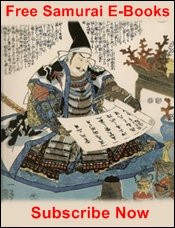
Get Free Exclusive Samurai Guides and E-books
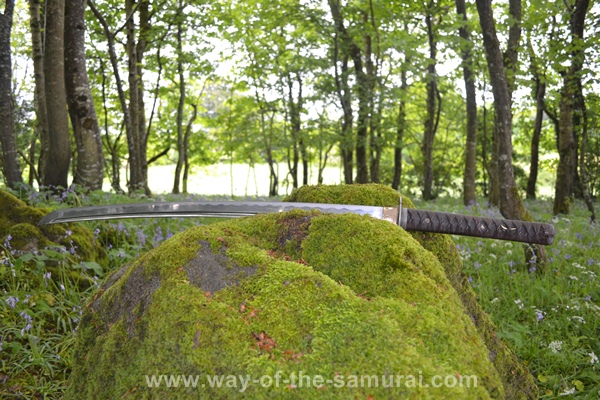

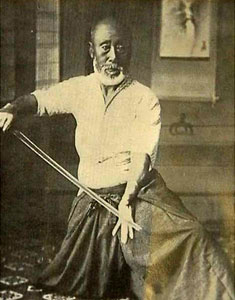
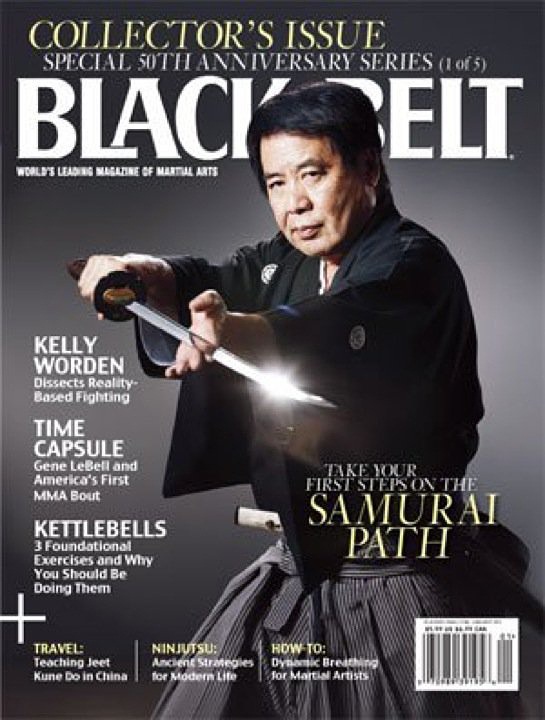
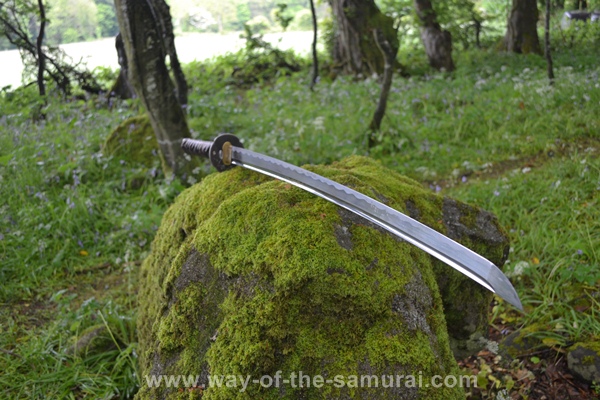
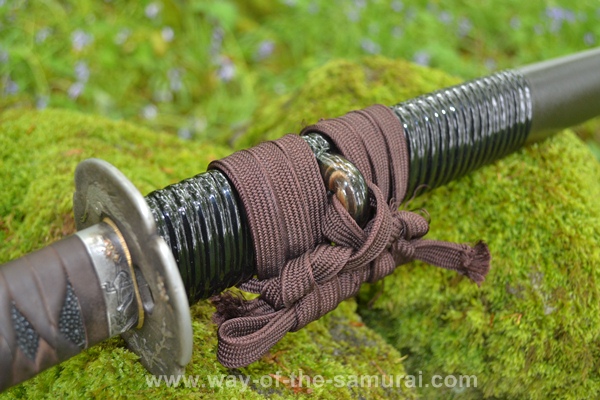
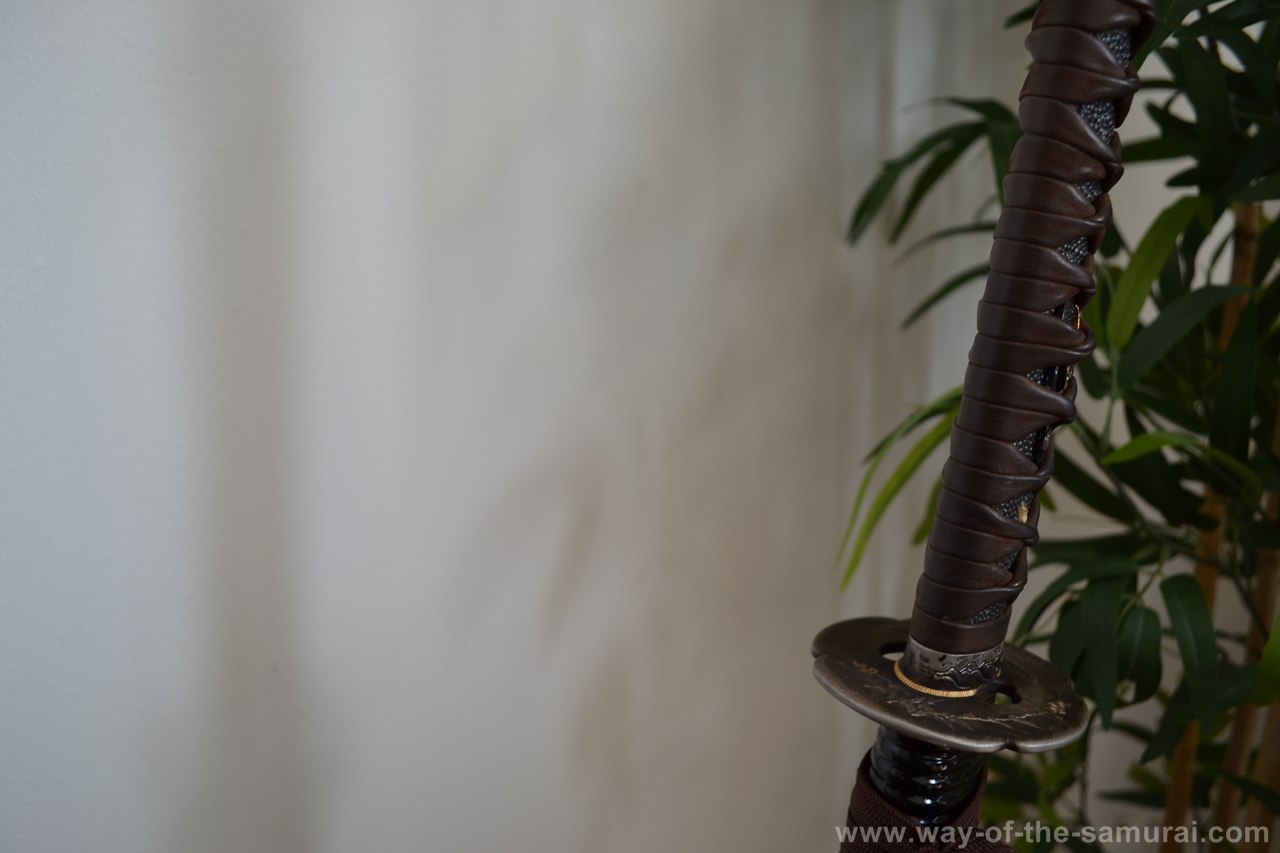
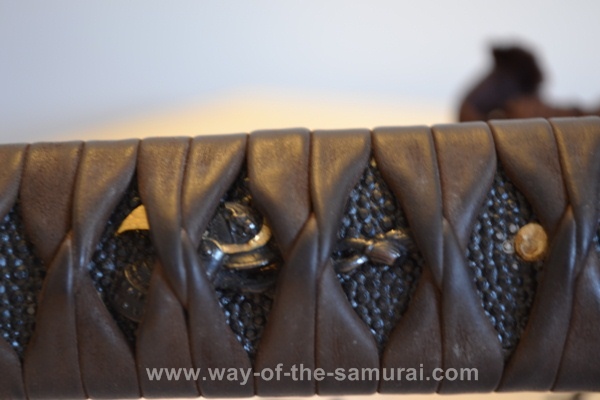
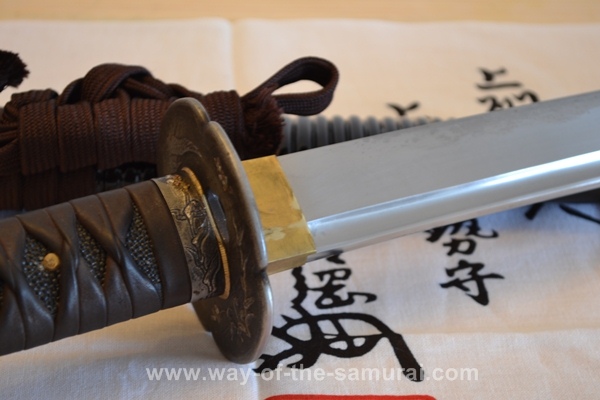
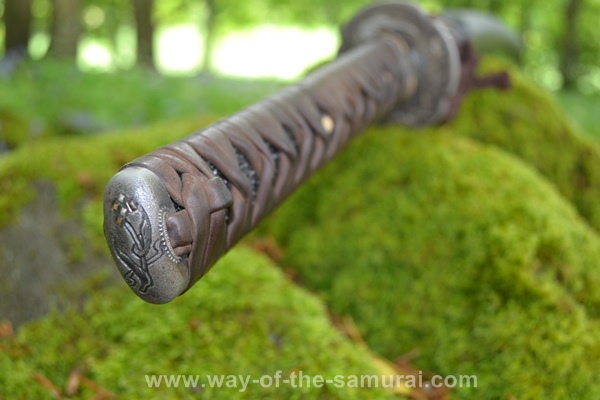
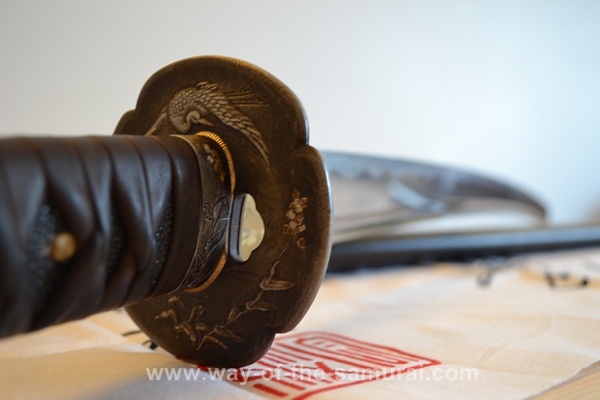
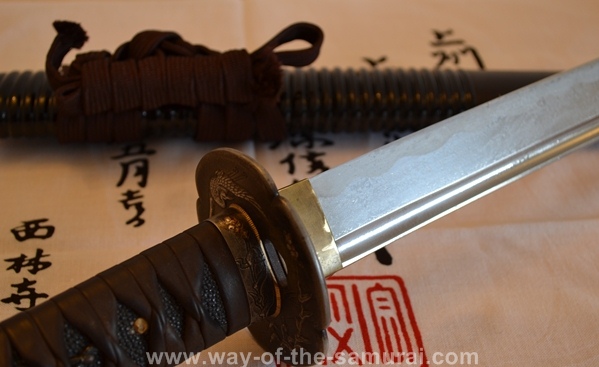







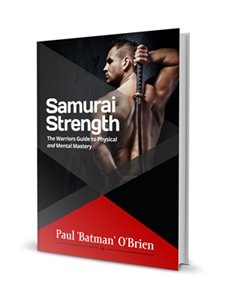
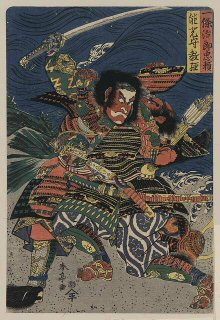
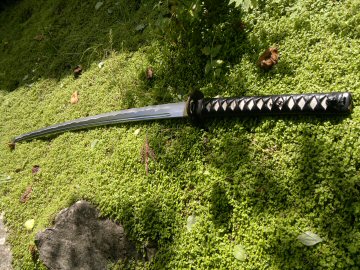
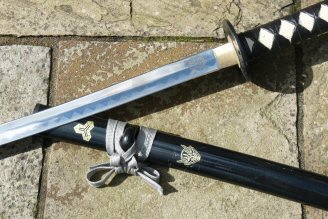
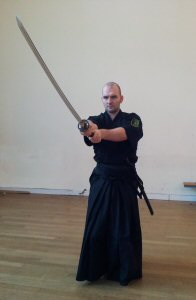
New! Comments
Have your say about what you just read! Leave me a comment in the box below.